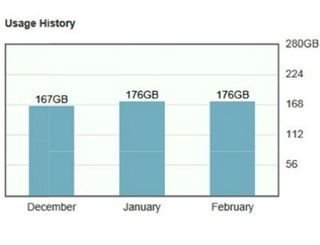NetForecast Revalidates Accuracy Of Comcast’s Meter

NetForecast issued a third report in May validating that Comcast’s broadband data usage meter remains accurate within the goals set by the MSO – to correctly measure traffic passing through a subscriber’s cable modem within plus or minus 1% over the course of a month.
NetForecast’s analysis found that Comcast’s meter was accurate within a range of -0.75% to +0.36%, which is well within the +/-1% goal, NetForecast Peter Sevcik, president of NetForecast, noted in the report (PDF).
Comcast enlisted NetForecast to independently and continuously audit the accuracy of its data usage meter system, and this report is the third the firm, which previously issued its Comcast broadband bit-counter findings in December 2009 and May 2010.
The latest report (hat tip: DSL Reports) tabulated accuracy results from 569,376 measurements at 55 Comcast service locations from January 2014 to March 2014. NetForecast measured both “passive traffic measurements” in subscriber homes and “active reference tests” in which a NetForecast PC and server generated the only traffic on a dedicated test line in subscriber homes. That combination, the firm said, would identify any potential meter accuracy issues and data needed to troubleshoot and resolve issues with the meter.
“Our analysis validates that Comcast is successfully meeting its accuracy goal,” Peter Sevcik, president of NetForecast, wrote.
The report also sheds light on how the meter works – Comcast’s IP Detail Record (IPDR) system collects and aggregates data from each cable modem termination system and transfers it to the MSO’s usage management platform, which associates that data with the customer’s account and stores it in a data base. The meter itself counts all subscriber traffic, both upstream and down.
The “lag” associated with that CMTS traffic reporting is generally about 15 minutes, and the meter tpically updates about three hours after the subscriber traffic has passed over the network. Comcast’s goal is to perform meter updates no later than 24 hours after the traffic event, but meter update lags were not subject to the new report and therefore were not validated by NetForecast.
Multichannel Newsletter
The smarter way to stay on top of the multichannel video marketplace. Sign up below.
Comcast provides the usage meter to all subscribers, though not all of those customers are presently subject to usage-based policies.
Comcast is testing usage-based Internet policies in a small batch of markets, including Atlanta and Augusta, Ga.; Nashville, Tenn.; central Kentucky; Jackson, Miss.; Charleston, S.C.; Maine; and Mobile, Ala., with Atlanta still the largest of the markets that are presently conducting the trials. In those cases, customers are fitted with a usage cap of 300 GB per month before users would be faced with a $10 charge for each additional bucket of 50 GB. Comcast is also testing a “Flexible-Data Option” that’s tailored for light Internet users on the MSO’s 3 lower-end Economy Plus tier. That opt-in trial caps usage at 5 GB per month before customers are subjected to per-gigabyte fees.
Comcast executive vice president David Cohen caused a stir at the recent MoffettNathanson Media & Communications Summit in New York, predicting that the MSO could roll out usage-based policies in all markets within about five years. He likewise predicted that the “vast majority of our customers would never be caught in the buying [of] additional buckets of usage.” Today, 98% of customers in the trail markets are not affected by the policies being piloted, according to the MSO.
Cohen later clarified his comments in a blog post, writing that Comcast has “no plans to announce a new data usage policy,” recalling that the operator suspended its previous 250-Gigabyte-per-month excessive use policy in 2012.
